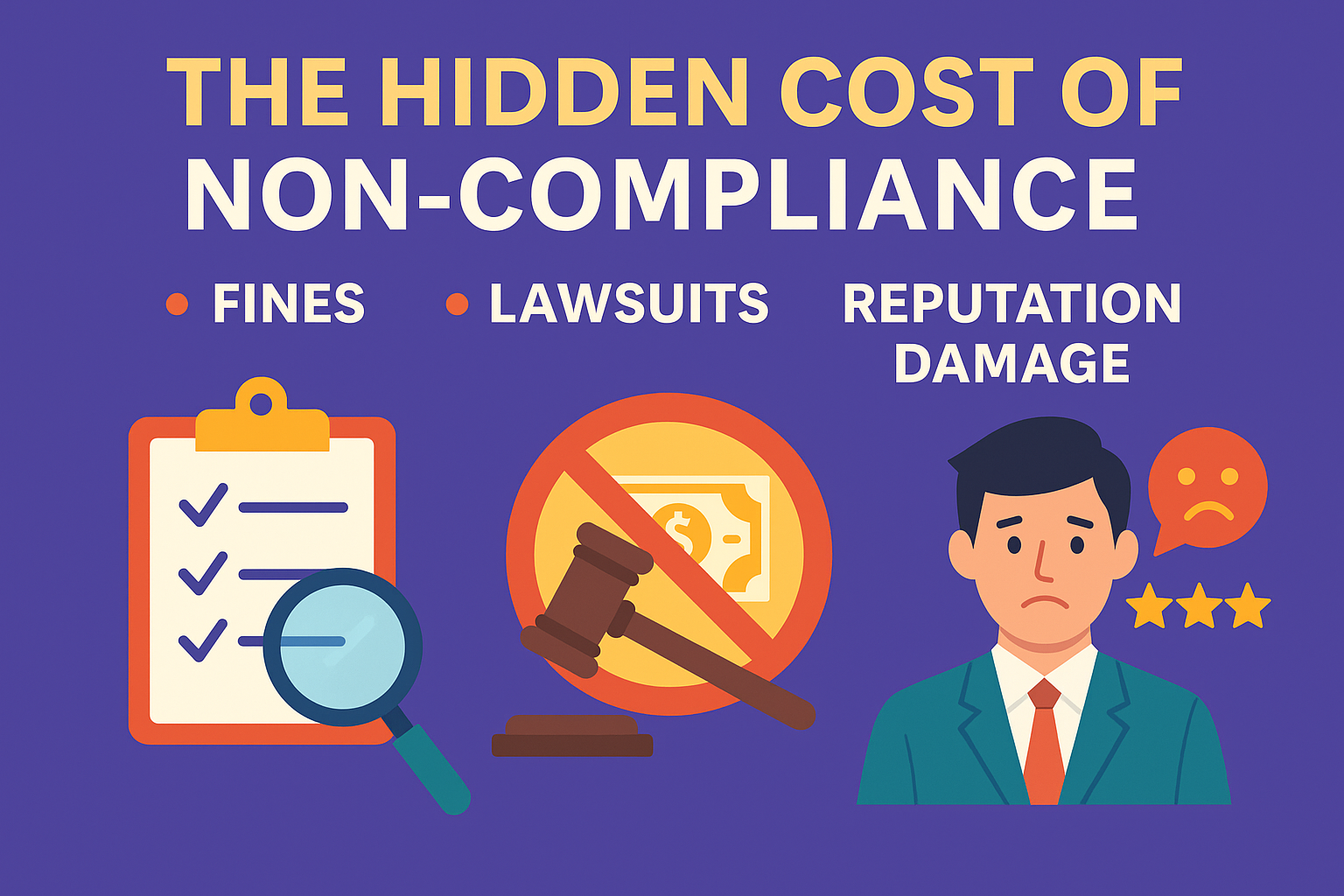Compliance Isn’t Optional—It’s a Business Necessity
For many small and mid-sized businesses, compliance feels like a burden—something for larger corporations or IT teams to worry about. But the reality is this: non-compliance can quietly destroy a business, regardless of its size.
From hefty fines to costly lawsuits and irreparable damage to your reputation, the consequences go far beyond paperwork. In this post, we break down the real risks of non-compliance and show you how to prevent them with smart, scalable strategies.
1. Regulatory Fines: Small Mistakes, Big Penalties
Compliance violations can trigger instant financial consequences—even if the issue was accidental. Government agencies don’t accept “we didn’t know” as a defense.
Common SMB Fines:
- HIPAA violations (healthcare): Up to $50,000 per violation
- PCI DSS violations (credit card handling): $5,000–$100,000 per month
- OSHA workplace safety penalties: Over $16,000 per serious infraction
Whether you run a dental office, senior care facility, manufacturer, or consulting firm, you’re expected to know the rules that apply to your industry. And the cost of getting it wrong adds up fast.
2. Legal Trouble: Lawsuits That Drain Your Business
Fines may be just the beginning. Non-compliance can open the door to civil lawsuits, class actions, and contract disputes. Even if your company ultimately wins in court, the legal fees and lost productivity can do permanent damage.
Legal risks for SMBs include:
- Customer data breaches leading to class-action lawsuits
- Employee claims due to poor documentation or missing policies
- Vendor disputes over failure to meet compliance requirements
💡 Takeaway: Legal risk isn’t just for the Fortune 500. SMBs are often easier—and more vulnerable—targets.
3. Reputation Damage: The Cost That Lingers
A single compliance failure can destroy the trust you’ve worked years to build. Clients, partners, and even potential hires want to know that your business is secure, ethical, and accountable.
The true cost of lost trust:
- Clients leave for more “secure” providers
- Sales pipelines dry up due to bad press or reviews
- Talent avoids your job listings
- Referral sources disappear
Unlike fines or legal fees, reputation damage is hard to measure—and even harder to fix.
4. Poor Documentation: Your Weakest Link in an Audit or Breach
If it’s not written down, it didn’t happen. That’s how auditors, investigators, and courts view your compliance efforts.
Why documentation matters:
- Demonstrates due diligence during audits or investigations
- Reduces liability by proving that you took action
- Protects staff and leadership if things go wrong
- Keeps your team aligned on policies, procedures, and responsibilities
From employee training logs to data breach response plans, organized documentation is your most important compliance tool.
How to Protect Your Business Without Breaking the Bank
You don’t need a massive legal team to stay compliant—you just need a plan. Here’s where to start:
✅ Conduct a compliance risk assessment at least once per year
🛡️ Create clear, customized policies based on your industry
📚 Train your staff regularly on security, ethics, and compliance standards
🔐 Implement basic cybersecurity measures like MFA, backups, and encryption
🗂️ Document everything—especially training, incidents, and policy changes
Final Thoughts: Compliance Is a Smart Business Strategy
Non-compliance isn’t just risky—it’s expensive. But with the right plan, tools, and guidance, you can avoid the landmines and build a safer, more trustworthy business.
At BounceBack Solutions, we help SMBs navigate HIPAA, PCI DSS, FTC Safeguards, and other regulations with confidence. Whether you need policies, training, or a full compliance program, we’re here to help.
👉 Schedule your free compliance checkup today and see where you stand.
















